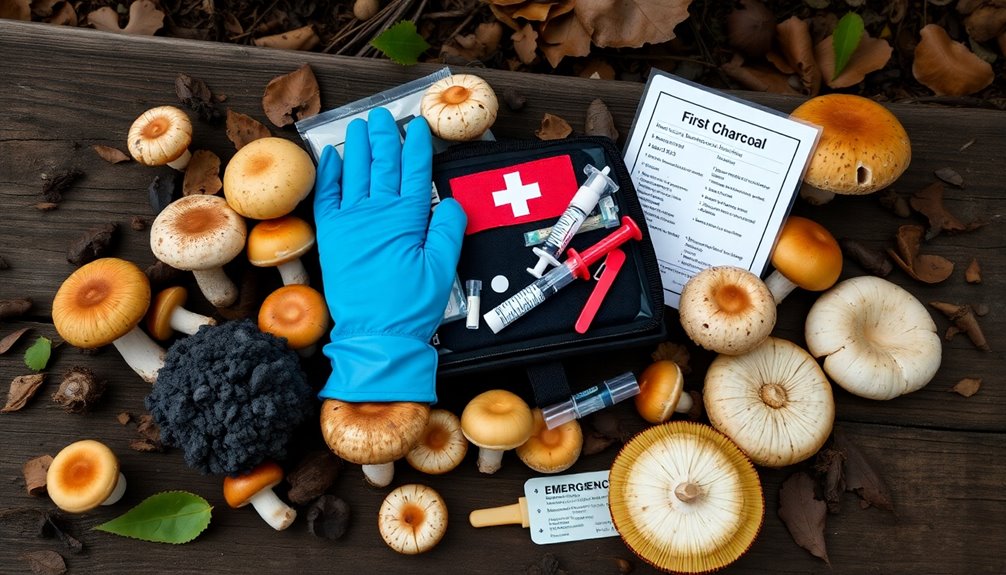Imagine standing in a field filled with tall, swaying oats. The sun colors everything a golden hue. You breathe in deeply, enjoying the fresh smell of nature. This beautiful place is not just calming but also great for wildlife, especially deer.
Deer love the lush oats because they taste so good and are full of nutrients. Forage oats, like the ones deer prefer, are among their favorite foods. They play a big role in food plots to attract deer.
Oats offer a lot to deer in terms of food. They have over 25% protein and are easy to digest. That makes oats an excellent meal for deer looking for nourishment.
Buck Forage Oats are famous among hunters for their effectiveness. They have been proven to attract more deer, especially when compared to other oats.
Adding variety to your food plots makes them even more appealing to deer. The actual datashows that mixing different plants like oats, peas, rye, and wheat works best. This mix draws deer from far away.
But, it’s key to know how long buck forage oats can last. We need to understand how oats grow and the best conditions for them.
Key Takeaways:
- Forage oats are highly preferred by deer due to their exceptional taste and nutritional content.
- Buck Forage Oats is regarded as an impressive plot option, often outperforming other alternatives in attracting captured deer.
- Diversity in plot composition has a positive effect on deer attraction in food plots.
The Benefits of Buck Forage Oats
Buck Forage Oats are a great pick for food plots, appreciated by deer fans. These oats are a top choice for whitetails, often eaten in forage trials1. They stand out due to their nutritional content. In good soil, they can offer over 25% crude protein1. Also, their fiber value is under 20%, so deer digest them well1.
Buck Forage Oats shine in fall and winter food production. They can yield up to 3,000 to 4,000 lbs./acre1. This ensures deer have enough to eat when it’s cold and food is scarce. Plus, these oats can take a lot of grazing without losing their goodness1.
Another key feature is how tall they grow. With good soil, they can reach 2 to 3 feet1. This means lots of food for deer. And, they thrive in soil with a pH over 6.0 and lots of nutrients. This makes them more appealing and effective1.
Planting buck forage oats is pretty flexible. You can spread them at 120 to 150 lbs./acre. Or, use no-till drilling at 70 to 80 lbs./acre1. This makes planting easier and helps the oats grow well.
Oats alone can give about 7 months of good forage. But if you want your food plots to last into summer, mix them with other plants1. This way, deer have a steady food supply all year round.
When mixing oats with other forages, adjust the amount. This keeps them from taking over1. Planning is crucial when adding oats to your plots.
Timing is also important for planting oats. In the South, plant them in September or October. In colder Northern areas, August is best. For spring/summer forage, try frost-seeding in April1. Following these tips ensures oats grow well and feed many deer.
For weed control, there are herbicides that work well with oats. Products like 2,4-D and Banvel help keep weeds away1. If ryegrass is a problem, consider using wheat instead. Axial XL and Achieve treat ryegrass, letting wheat and broadleaf plants thrive1.
In summary, buck forage oats offer many benefits. Deer love them, and they are nutritious. They also produce a lot of food and can handle plenty of grazing. With flexible planting and careful timing, buck forage oats are a top choice for wildlife management.
Soil Preparation and Planting Tips
Before planting Buck Forage Oats, test your soil. Find out the soil pH and fertility levels. Oats do best with a pH of 6.0 or greater2. They also need plenty of nutrients.
You can spread oats by hand or use a machine. If broadcasting, make the seedbed smooth and firm first. Then, mix the seeds into the soil to get them close to the earth.
“Oats should be planted at the recommended rates and depths according to the planting method.”
For no-till drilling, get rid of weeds with glyphosate before planting.
| Statistical Data2 | Value |
|---|---|
| Germination Time | 5 – 7 days under optimal conditions |
| Height | 2 – 3 feet |
| Sunlight Requirements | 6+ hours of full sun for best results |
| Ideal pH | 5.5 – 7.0 |
| Seeding Rate | 75 – 100 lbs. per acre |
| Depth for planting | 1/2 – 1 inch |
| Fertilizer recommendation | 250 – 450 lbs. per acre |
| Recommended planting time | Fall and spring when night time temperatures are consistently below 65 degrees |
| Climate Zones | Cool Season, Transition Zone, Warm Season |
The stats2 show, Buck Forage Oats sprout in 5 to 7 days if conditions are right. They grow up to 2 to 3 feet tall. These oats need at least 6 hours of sunlight daily to thrive. The best soil pH is between5.5 – 7.0.
When planting, you should use 75 to 100 pounds of seeds per acre. The seeds should be planted 1/2 to 1 inch deep. The proper amount of fertilizer is 250 to 450 pounds per acre. Plant the oats in fall or spring when it’s cooler, under 65 degrees at night. This makes them perfect for different climates — cool season, transition zone, and warm season areas2.
By adhering to these guides, you’ll grow a robust Buck Forage Oat field. This will attract deer and other wildlife to your area.
Planting Mixtures and Extension of Food Plots
Buck Forage Oats can be mixed with annual forages like clovers, peas, and brassicas. This mix makes food plots last longer than just oats alone3. It gives wildlife food all season and helps deer get more nutrients.
When adding plants to buck forage oats, annual clovers are a top pick. They not only make the plot last longer but also improve the soil by adding nitrogen4. If you mix oats with perennial clover and chicory, you should plant fewer oats. This keeps the oats from covering the clover and chicory too much. It lets both grow well3.
Buck forage oats grow about 2 feet tall, perfect with perennial clovers3. This lets the clover grow well and still provides good food for deer. Using oats in your food plot blend creates a varied and strong area for wildlife all season.
Example Planting Mixture:
| Component | Ratio |
|---|---|
| Buck Forage Oats | 60% |
| Crimson Clover | 30% |
| Austrian Winter Peas | 10% |
This mix brings together buck forage oats with the tasty crimson clover and hardy Austrian winter peas4. It creates a varied and nutrient-packed forage plot for deer, helping them stay healthy. You can change the mix based on the area and deer needs4.
Planting buck forage oats at the right time is key, especially before the first frost. Aim to plant 40-50 days before the frost hits4. In areas south of Interstate 80, plant by September 1. This makes sure the oats grow well and are nutritious for deer in hunting season4.
To make fall plantings work best, plant right before rain in August4. Rain helps seeds germinate and start growing. Use a spreader, mix the seeds into the soil, and press down with a cultipacker. This helps seeds make good contact with soil, boosting germination4.
Choosing the right spot for your food plots is important5. Things like soil, sun, and weather differ depending on where you are. Talking to local farm experts or using online tools like the Smart Mix Calculator at GreenCoverSeed.com can help make great choices5.
Using buck forage oats with the right plants can give deer food all through hunting season3. By thinking about the plot’s life and location, you can make great habitats. They will attract and feed deer for many years.
Proper Timing for Planting Buck Forage Oats
When it comes to planting Buck Forage oats, timing is key. Planting them at the right time ensures they grow well and attract deer. Most Buck Forage oats sprout within a week if they get enough water, and almost all sprout in two weeks. It’s important to plant them when the weather in your area is just right.
In the South, the best time to plant Buck Forage oats is in September or October. This is when the soil usually has enough moisture. If you plant the oats around September 1st and there’s enough rain, they will start to grow in about a week. This will attract deer to your property. Buck Forage oats grow better than wheat and MI oats, so deer prefer them. But remember, the weather can affect their growth. Too much rain can cause flooding, and not enough can stunt their growth6.
In the North, plant a cold-hardy kind of oats in August. Also, plant some other cool-season forages just in case the oats don’t survive the winter. This makes sure deer have something to eat all winter. If you want oats for spring or summer, plant them in April. Adding other plants like soybeans and cowpeas in the summer can help a lot.
The best time to plant Buck Forage oats changes based on where you live and what you want from them. If you plant them at the times suggested, they will make a great food source for deer. This helps keep deer around and makes hunting better.
Recommended Planting Methods
Knowing when to plant is one thing. Knowing how to plant them is another. There are many ways to plant Buck Forage oats that work well. These include turning the soil over, spreading the seeds around, lightly covering them with soil, mixing lime with the seeds, watering before it rains, plowing, and using a special tool7.
Recommended Seeding Rates
To get the most out of Buck Forage oats, you need to plant the right amount. People recommend planting 50 pounds of Bob oats, 50 pounds of Elbon rye, 15 pounds of AWP, and 3 pounds of Red clover together. It’s a good idea to change how much you plant based on the seed’s quality7.
Image

Weed Control Measures
Oats grow fast and naturally keep weeds away. But sometimes, you might need to fight weeds. Using herbicides like 2,4-D, Harmony Extra, Banvel, or Clarity works well against many weeds. For tough grass weeds like ryegrass, follow specific advice. And if ryegrass is a big issue, planting wheat instead of oats can be smart. Some herbicides can kill ryegrass but won’t hurt wheat or other plants.
Timing is key when tackling weeds in oat fields. The writer suggests planting brassicas and cereals about 10 weeks before the first frost8. This gives plants a strong start before weeds can. It’s also smart to plant brassica and rye in turns to keep diseases away8. Properly timing the planting not only suppresses weed growth but also maximizes the germination time for forage rye, giving it the best chance to thrive in the field. Rye, in particular, benefits from cooler temperatures, which usually coincide with the onset of fall. By carefully timing the planting process, farmers can ensure a productive crop while minimizing competition from weeds and reducing soil-borne diseases. Additionally, considering the **germination time for forage rye** is critical for ensuring that it establishes itself strongly before winter sets in. This period allows the rye to take advantage of moist soil conditions, which are ideal for root development. By controlling both the timing and type of crops planted, farmers can create an environment that encourages healthy growth while naturally suppressing competing weeds and pests.
There are ways to fight weeds besides chemicals. Start with good soil prep. Clear old plants and loosen the soil well. This helps new plants but not weeds. Also, pulling weeds by hand or using tools keeps plots clean. In small areas, this is better than chemicals. And, covering the soil with mulch stops weeds from sprouting.
To keep oat plots weed-free, mix strategies. Use herbicides, plant at the right time, prepare the soil, and do regular upkeep. These steps help keep oat plots flourishing, making a great food source for deer8. Keeping plots weed-free boosts their success and helps local deer thrive.
The Durability and Lifespan of Buck Forage Oats
Choosing the right food plot for white-tailed deer is important. Buck Forage Oats are great for deer food plots. They can last about 7 months and produce up to 4,000 pounds per acre9.
Buck Forage Oats are good for deer during fall and winter. But as they get older, they become less tasty to deer. Adding different plants can help keep the food plot going after spring9.
Adding perennial clover to your food plot is a good idea. It can feed deer for up to seven years. This makes it a reliable source of food9.
To make sure Buck Forage Oats grow well, think about the seed quality and soil. The Perfect Plot blend from BioLogic is a good choice. Even though it costs about $60 per acre, it’s worth it for feeding deer9.
It’s also important to test the soil before planting. This helps you know what nutrients the plants need. Doing this can make your food plot better each year109.
| Forage Crop | Average Lifespan |
|---|---|
| Buck Forage Oats | 6-7 months |
| Clover | 4-7 years |
| Brassicas | Durable for several years |
| Wheat, Oats, Soybeans | Approximately 2 years |
| Corn | Several years (based on hard shell durability) |
Keep leftover Buck Forage Oats seeds in a cool, dry place. This makes them last longer for future uses. Clovers and brassicas also last for years. Other crops like wheat and corn have different lifespans9.
Understanding Buck Forage Oats helps manage food plots well. By adding different plants and taking care of the soil, deer food plots can keep feeding deer for a long time. This helps keep deer healthy and happy9.
Conclusion
Buck Forage Oats are a great choice for food plots for white-tailed deer. These oats are liked a lot by deer and are full of nutrients. They help deer grow strong antlers11. They grow fast too, attracting deer early in the season and keeping food plots going longer11.
Another plus is that Buck Forage Oats can handle being eaten a lot and don’t get sick easily. This makes them a smart pick for feeding deer all over the U.S12.. When planted right, these oats give deer a healthy food option all season long13.
It’s also key to look at the soil, manage weeds, and use different plants together. Getting the soil right, using lime and fertilizer, and picking the best seeds make food plots better12. Adding plants like clovers and alfalfas adds variety and more food for deer11.
To wrap it up, Buck Forage Oats are very good for deer. They like it, it’s full of good stuff, grows fast, and lasts long. Make sure the soil is ready, mix in different plants, and keep weeds away. This will make food plots that deer love and keep them healthy. Using Buck Forage Oats in your plan is a smart move for a great hunting season.
FAQ
How long do Buck Forage Oats last?
What are the benefits of Buck Forage Oats?
How should I prepare the soil and plant Buck Forage Oats?
Can Buck Forage Oats be planted in mixtures with other forages?
When is the proper timing for planting Buck Forage Oats?
What measures can I take for weed control in Buck Forage Oat plots?
How durable are Buck Forage Oats in food plots?
Is there any conclusion or final thoughts about Buck Forage Oats?
Source Links
- https://deerassociation.com/food-plot-species-profile-oats/ – Food Plot Species Profile: Oats | National Deer Association
- https://hancockseed.com/products/buck-forage-oats – Buck Forage Oat Seed
- https://mossyoakgamekeeper.com/food-plots/planting-for-maximum-food-plot-attraction/ – Planting For Maximum Food Plot Attraction | Mossy Oak Gamekeeper
- https://www.pgc.pa.gov/Wildlife/HabitatManagement/Pages/FoodPlots.aspx – Food Plots
- https://saddlehunter.com/community/index.php?threads/food-plot-info.26949/ – Food Plot Info
- https://www.michigan-sportsman.com/threads/buck-forage-oats.43659/ – Buck Forage oats
- https://www.archerytalk.com/threads/buck-forage-oats.1005854/ – Buck Forage Oats
- https://www.whitetailhabitatsolutions.com/blog/easy-no-till-food-plot-methods – Easy No Till Food Plot Methods
- https://www.outdoorlife.com/story/hunting/strategies-for-growing-the-perfect-food-plot-for-deer/ – 11 Strategies For Growing The Perfect Deer Food Plot
- https://deq.louisiana.gov/assets/docs/Envirothon/Wildlife-Study-Guide.pdf – PDF
- https://food-plots-for-deer.com/nutrition-that-kills/ – Nutrition that Kills
- https://www.northamericanwhitetail.com/editorial/deermanagement_northern_food_plot_planting_strategies_051111/263546 – Northern Food Plot Planting Strategies – North American Whitetail
- https://texashuntingforum.com/forum/ubbthreads.php/topics/1331844/Oats_vs_Wheat – Oats vs. Wheat…..










